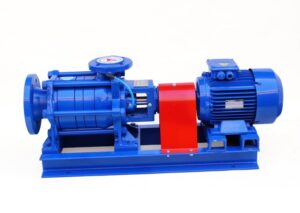Vacuum Discharge Pumps: Technical Overview and Application Areas
Introduction
Vacuum discharge pumps are specialized devices designed for discharging liquids or gases under vacuum conditions in industrial and commercial applications. Thanks to their high performance, durability, and low maintenance requirements, they are widely used across various industries. This article outlines the working principle, structural features, advantages, and application areas of vacuum discharge pumps.

sub vacuum evacuation pump
- Working Principle of Vacuum Discharge Pumps
These pumps are designed to discharge fluids or gases from systems operating under vacuum. Their working process involves the following steps:- The liquid or gas present in the vacuum environment is drawn through the pump’s inlet port.
- The pump compresses the medium to a defined pressure level and conveys it to the discharge line.
- Special engineering solutions ensure high efficiency and reliability during operation.
- Structural Features
Key structural components of vacuum discharge pumps include:
- Pump Body: Made of durable materials resistant to wear and chemical exposure.
- Rotor and Vanes: Essential elements that enable the movement of the fluid within the pump.
- Inlet and Outlet Ports: Allow for the transfer of the liquid or gas in and out of the vacuum system.
- Sealing Systems: Prevent leakage to ensure efficient and reliable operation.
- Advantages
Vacuum discharge pumps offer the following key advantages:
- High Efficiency: Ensures reliable discharge under vacuum conditions.
- Durability: Built with long-lasting materials.
- Low Maintenance Requirements: Requires minimal maintenance to ensure continuous operation.
- Chemical Resistance: Capable of withstanding harsh industrial conditions.
- Application Areas
Vacuum discharge pumps are commonly used in the following sectors:
- Chemical and Petrochemical Industry: For transferring chemical liquids under vacuum.
- Food and Beverage Industry: In vacuum filling and liquid discharge processes.
- Medical and Pharmaceutical Industry: For vacuum-assisted sterilization and fluid removal.
- Paper and Pulp Industry: In vacuum water discharge and drying systems.
- Automotive and Metallurgy Sectors: In processes that require liquid or gas removal under vacuum.
Conclusion
Vacuum discharge pumps play a critical role in various industrial applications by enabling the reliable discharge of fluids and gases under vacuum. With their high efficiency, low maintenance needs, and robust design, they provide long-term and dependable solutions. Selecting the right model tailored to your needs can help optimize your process efficiency.


